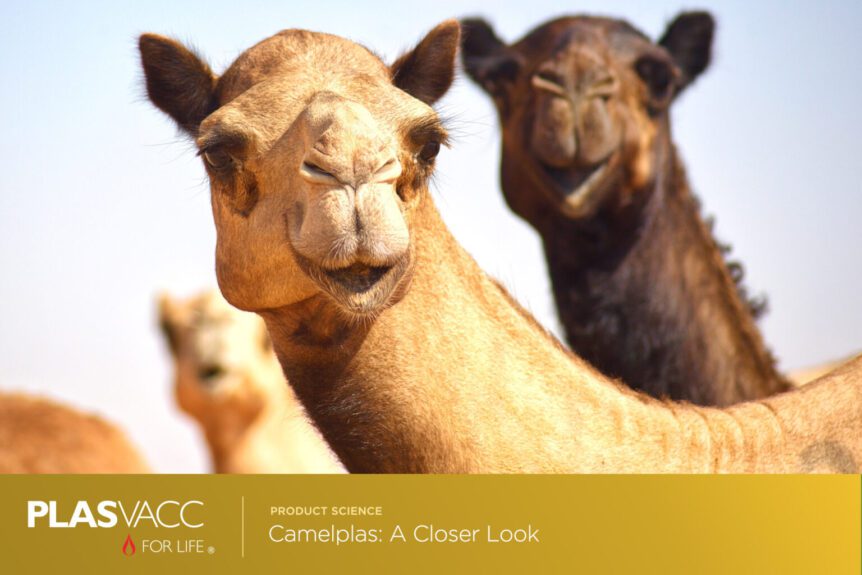Think of camels and, odds are, your mind will drift to the far-off deserts of North Africa and the Middle East. You’d be forgiven, as the Camelus dromedarius or dromedary camel is thought to have originated in Arabia or Somalia. However, it is now believed that the largest wild dromedary camel population now resides right here in Australia. First introduced into the deserts of Australia in the 1840s they were an important transportation tool for early Australians, but as motor vehicles began appearing on the continent, many camels were released into the wild where they soon flourished.
One of two types, dromedary camels are easily distinguished by their single hump, as opposed to their Bactrian cousins, which sport two. Part of the larger Camelidae family, these two species of camel are closely related to both llamas and alpacas as well.
While the camel’s importance as a form of transport has certainly dwindled over the years, they still enjoy a revered role in many societies around the world where camel racing is still a cherished pastime. Their stock is also rising as many rediscover their utility goes well beyond long desert voyages, with their milk prized for both consumption as well as its use in hair, skin, health and beauty products.
Here in Australia, camel racing is alive and well, with races like Boulia Camel Race serving as a yearly Queensland staple. It’s also home to a growing livestock industry centered around milk production and weed control. However, as camel herd sizes grow across Australia, the number of camels afflicted by maladies affecting immune response has risen accordingly.
Plasma treatments to support equine immune health have long been a valuable tool in equine veterinary practice, saving the lives of hundreds of horses every year in Australia alone. Applying the same principles behind our Equiplas line of APVMA-registered equine plasma products, Plasvacc has worked hard to develop Camelplas, a highly effective camelid plasma treatment for failure of passive transfer that also serves as a supportive treatment for a range of conditions, such as diarrhoea, colitis, renal conditions and active infections.
As camel dams only produce milk when with calf, calf health is imperative to the commercial success of camel dairy operations, and as such, successfully treating failure of passive transfer and partial failure of passive transfer is hugely important. With the help of Camelplas, Dr. Margie Bale has been able to greatly reduce neonatal fatalities across the animals under her care, and has graciously partnered with us on future product research as well.
Proven to be completely safe and effective for all camelid species, including alpacas and llamas, Camelplas is Australia’s only camelid plasma product able to guarantee high and uniform gamma globulin concentrations in each treatment unit, with each 300ml treatment unit guaranteed to provide at minimum 15g of gamma globulins, and generally well in excess of this.
Collected at the only APVMA-licensed plasma production facility in Australia, Camelplas is collected from hyperimmunised donor dromedary camels that reside at Plasvacc’s Queensland plasma production facility.
“Plasvacc (Equiplas and Camelplas) supplies vital immunoglobulins essential for compromised, ill and failure of passive transfer foals. Administration of hyperimmune plasma is the cornerstone to providing supportive care in an intensive care situation”.
– Dr Olivia James, Brindabella Mobile Vet Service
Subject to a strict quality control process, Camelplas begins with strictly screened, quarantined donor animals who undergo an extensive hyperimmunisation protocol. Our donors are completely free of disease and test negative for Johnes Disease, Enzootic Bovine Leucosis, Bovine Viral Diarrhoea Virus (Pestivirus) and BlueTongue.
Our donor herd in Kalbar consists of two dromedary camels, Cleo and Mac. Impressively mild-mannered, they both enjoy a good pat, but are even more chuffed when greeted with a nice big handful of lucerne.
While they may not bear the heavy loads their ancestors were tasked with carrying across arid deserts, together, with their plasma donations they’re responsible for the improved health and well-being of countless camels, llamas, and alpacas across Australia and beyond.

